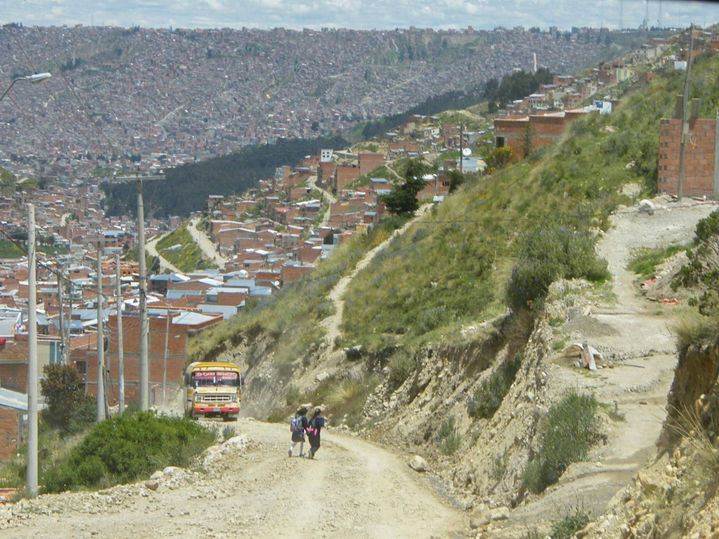Impressions of Bolivia, around La Paz
Arriving by plane in La Paz is already in itself an experience. After a dive into the El Alto airport at 4,400 metres, you wait for your luggage in a hall with oxygen tanks along the wall. For some passengers this is really not some weird interior decoration... Upon leaving the airport, you sharply descend into the city, still at 4,000 metres though. The air is thin, and instead of oxygen tanks, you receive a 'mate de coca' upon arrival in your hotel, a tea drawn from coca leaves. For those in need, it helps against 'la puna', altitude sickness. Easy, easy, take it easy at first, no major physical effort right away, even if the city calls and your eagerness to discover pushes. La Paz calls indeed, and rightly so, for it is undoubtedly the most authentic capital of South America. Like in all Bolivia, its population is largely indigenous, its traditions are genuine and colourful, its cultural expression an inventive syncretic mixture of ancient beliefs and habits with the influences of Spanish colonial and Catholic rule. The immediate surroundings of La Paz offer some mindblowing landscapes of mountains and rock formations, either in aof bone dry desert or on snow-capped Andean summits. Apart from that, La Paz is also the gateway to the southern shores of Lake Titicaca and to the magnificent archaeological site of Tiwanaku, shedding a fascinating light on South America's pre-Inca civilisation. Bolivia is very diverse in nature and culture, La Paz brings most of it together and is yours to discover.
Before visiting the place of your choice:
The Yungas range is the Eastern slope of the Andes, where the mountain range gradually transits to a landscape of Amazonian forests. There is simply no more realistic way to label the un-asphalted road between La Paz and Coroico, reaching at its highest point an elevation of 4,650 metres and then, over a stretch of some 40 kilometres, rapidly descending to a 3,600 metres lower level.... while bikers swing to their heart's content round and above abysses of 800 vertical metres deep. One thing is certain: there is no risk you would miss the bend a second time..., and your biking skills would not need a second chance to make a first impression. So, you either choose to do the descent on a bike and watch the pictures of others afterwards, or you have yourself driven around by an experienced driver, you look around and take pictures of the mountains, waterfalls and valleys, draped with low and fast moving clouds and you show your shots afterwards to the bikers. Your choice, but know that combining the two options is where the Camino got its name from...

© 2020.Created by Marc Van den Reeck with Wix.com























